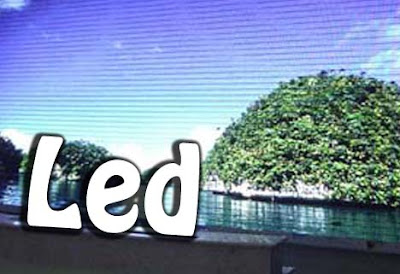This article is dedicated to electronic displays with LED
technology. On screens with LED as backlight also see TV or computer monitor.
.
An LED display is an output device that displays data or
information to the user, which is characterized by being composed of light
emitting diodes or ledes, adapted to Spanish and word derived from the acronym
LED (Light Emitting Diode).
This type of display should not be confused with LCDs with
LED backlight, very currently used in laptops, monitors and TVs. For reasons of
business (to appear more modern technology for commercial purposes) LED
backlight is presented as a new LCD technology and LED changes in the
designation of these devices, without this actually involves a really important
technological change.
The display consists of panels or modules ledes (light
emitting diodes), whether monochromatic or polychromatic: the latter are formed
in turn with RGB ledes (the primary colors of light), or various configurations
tailored to the application. These modules together form pixels, which allows
to form character, text, images and even video, depending on the complexity of
the display and control device.
The most common uses for LED screens are: signs,
information, advertising and high-resolution full-color video (concerts, public
events, ...), this is due to its high resistance to outdoor, easy manufacturing
and maintenance and low consumption.
One problem is resolution LED screens: While on a computer
monitor, today, between 1024x768 resolutions are achieved and up to 4096 × 2160
(4K) in a 4x3 meters LED screen is only 192x144 reach physical pixels. To fix
this technology known as virtual pixel technology (English Virtual Pixel
Technology), which offers greater image resolution on the same physical
configuration using some basic geometric concepts developed. There are
techniques of virtual pixel: geometric / square and interpolado.1
So, it is available pixels and subpixels integrally formed
by green, red and blue ledes getting through the mixture or combination of
light elements, more than 16 million colors.
